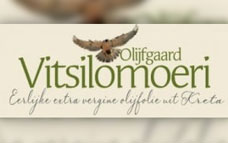Installeer de app
How to install the app on iOS
Follow along with the video below to see how to install our site as a web app on your home screen.
Opmerking: This feature may not be available in some browsers.
Je gebruikt een verouderde webbrowser. Het kan mogelijk deze of andere websites niet correct weergeven.
Het is raadzaam om je webbrowser te upgraden of een browser zoals Microsoft Edge of Google Chrome te gebruiken.
Het is raadzaam om je webbrowser te upgraden of een browser zoals Microsoft Edge of Google Chrome te gebruiken.
Lichttherapie
- Onderwerp starter ikke
- Startdatum
Quote:
Blue light irradiation is effective in acne treatment. Patients without nodulocystic lesions are better candidates for blue light irradiation.
Quote:
Photodermatol Photoimmunol Photomed. 2004 Oct;20(5):266-9.
Blue light phototherapy in the treatment of acne.
Tzung TY1, Wu KH, Huang ML.
http://www.ncbi.nlm.nih.gov/pubmed/15379878
Blue light irradiation is effective in acne treatment. Patients without nodulocystic lesions are better candidates for blue light irradiation.
Quote:
Photodermatol Photoimmunol Photomed. 2004 Oct;20(5):266-9.
Blue light phototherapy in the treatment of acne.
Tzung TY1, Wu KH, Huang ML.
http://www.ncbi.nlm.nih.gov/pubmed/15379878
Quote:
The pilot study involved 14 nursing home patients with Alzheimer's disease and related dementia. A light source producing low levels of 300 to 400 lux of a bluish-white light with a color temperature of more than 9000 K was installed in the residents' rooms. Light exposure occurred during daytime hours for a period of four weeks. Light-dark and activity-rest patterns were collected using a calibrated instrument prior to and after the lighting intervention. Measures of sleep quality, depression and agitation also were collected using standardized questionnaires.
Figueiro added that the improvement in sleep quality also was associated with other noticeable behavioral changes.
"Subjective reports by the nursing staff were that the patients were calmer, eating better and their overall behavior was more manageable," she said.
http://www.eurekalert.org/pub_releases/2014-06/aaos-lti060414.php
The pilot study involved 14 nursing home patients with Alzheimer's disease and related dementia. A light source producing low levels of 300 to 400 lux of a bluish-white light with a color temperature of more than 9000 K was installed in the residents' rooms. Light exposure occurred during daytime hours for a period of four weeks. Light-dark and activity-rest patterns were collected using a calibrated instrument prior to and after the lighting intervention. Measures of sleep quality, depression and agitation also were collected using standardized questionnaires.
Figueiro added that the improvement in sleep quality also was associated with other noticeable behavioral changes.
"Subjective reports by the nursing staff were that the patients were calmer, eating better and their overall behavior was more manageable," she said.
http://www.eurekalert.org/pub_releases/2014-06/aaos-lti060414.php
Over o.a. fotonentherapie: http://www.wanttoknow.nl/inspiratie/gastcolumns/de-geneeskracht-van-licht/
http://www.wanttoknow.nl/inspiratie/gastcolumns/de-geneeskracht-van-licht/
(oei deze had ik hier al geplaatst!)
(oei deze had ik hier al geplaatst!)
Quote:
Dagelijks zonlicht vermindert kans op darmkanker
maandag 23 juni 2014 | Bron: LUMC
Elke dag een ‘shotje’ zonlicht remt de groei van darmtumoren. Dat ontdekten onderzoekers van het Leids Universitair Medisch Centrum (LUMC) door muizen aan UV-straling bloot te stellen.
Quote:
Kwartiertje
Een kwartiertje per dag de zon in lijkt voldoende om de kansen op darmkanker te verkleinen. “In de zomer komen we daar gemakkelijk aan, de tekorten ontstaan ’s winters. In dat geval kan een hoogtezon uitkomst bieden”, denkt De Gruijl. Volgens hem gaat het dagelijkse beetje zonlicht niet ten koste van het risico op huidkanker.
http://www.gezondheidsplein.nl/nieuws/dagelijks-zonlicht-vermindert-kans-op-darmkanker/item68775
Dagelijks zonlicht vermindert kans op darmkanker
maandag 23 juni 2014 | Bron: LUMC
Elke dag een ‘shotje’ zonlicht remt de groei van darmtumoren. Dat ontdekten onderzoekers van het Leids Universitair Medisch Centrum (LUMC) door muizen aan UV-straling bloot te stellen.
Quote:
Kwartiertje
Een kwartiertje per dag de zon in lijkt voldoende om de kansen op darmkanker te verkleinen. “In de zomer komen we daar gemakkelijk aan, de tekorten ontstaan ’s winters. In dat geval kan een hoogtezon uitkomst bieden”, denkt De Gruijl. Volgens hem gaat het dagelijkse beetje zonlicht niet ten koste van het risico op huidkanker.
http://www.gezondheidsplein.nl/nieuws/dagelijks-zonlicht-vermindert-kans-op-darmkanker/item68775
G
Guest
Guest
Interessante aanbieding bij iBood. Tot vannacht 23:59 uur, of tot het uitverkocht is.
EUR 99,95
Merk: Litebook
Type: Litebook Elite
EUR 99,95
Merk: Litebook
Type: Litebook Elite
G
Guest
Guest
Overigens kost de Litebook Elite elders EUR 189,- op zijn minst, dus het is echt een hele mooie aanbieding. Of is het geen goed merk?
hoi vrysuyver, ter overweging: ik heb destijds de golite blue van philips gekocht. Dat was toen ook met korting vanwege een open box constructie. Dan is die een maand of 2 in gebruik geweest en weer terug gestuurd. Die was toen 125 euro. Op ebay staan goedkopere aanbiedingen voor hetzelfde product (bijv. ook open box). Of deze http://www.outletstorespijkenisse.n.../Philips-goLITE-Blu-HF3330-_-Energielamp.html
Het nut van blauw licht voor de gezondheid, ook van de ogen (denk ook aan staar), neemt toe als we ouder worden: http://www.nytimes.com/2012/02/21/h...-circadian-rhythm-disturbances.html?_r=1&
Lievergezond
Well-known member
http://www.hbvl.be/cnt/dmf20150319_01587830/voldoende-daglicht-verkleint-de-kans-op-bijziendheid
Kinderen zijn vaker bijziend door te weinig daglicht
19/03/2015 om 15:37
Kleine kinderen worden steeds vaker bijziend en het begint ook op steeds vroegere leeftijd. Dat komt volgens Kathryn Rose van de Universiteit van Sydney omdat kinderen te weinig buiten spelen.
‘Het maakt niet zoveel uit wat ze buiten doen, als ze maar dagelijks zo’n twee tot drie uur daglicht krijgen. Het risico op bijziendheid zou daardoor al de helft minder zijn’, zegt de Australische wetenschapper. Uit recent onderzoek, gepubliceerd in het tijdschrift Nature, bleek ook dat kinderen uit Singapore vaker bijziend zijn dan Chinese kinderen. Dat zou verband houden met het feit dat Chinese kinderen 13 uur per week buiten zijn, terwijl dat in Singapore maar drie uur is.
Professor Peter Stalmans van het UZ Leuven bevestigt dat steeds meer mensen, kinderen ook, met een dergelijke oogafwijking geconfronteerd worden. ‘Naar schatting 4 op 10 Belgen heeft last van myopie. Onderzoek heeft inderdaad uitgewezen dat licht een belangrijke factor kan zijn. Wellicht heeft het te maken met de invloed op het hormonaal systeem. De hoeveelheid dopamine die in onze hersenen wordt afgescheiden, is afhankelijk van de blootstelling aan licht. Hoe meer daglicht, hoe meer dopamine vrijkomt. En dat zou misschien een invloed kunnen hebben op ons zicht’, zegt professor Peter Stalmans van UZ Leuven. via http://www.leefbewust.com/2015/nieuws/200315.html
Kinderen zijn vaker bijziend door te weinig daglicht
19/03/2015 om 15:37
Kleine kinderen worden steeds vaker bijziend en het begint ook op steeds vroegere leeftijd. Dat komt volgens Kathryn Rose van de Universiteit van Sydney omdat kinderen te weinig buiten spelen.
‘Het maakt niet zoveel uit wat ze buiten doen, als ze maar dagelijks zo’n twee tot drie uur daglicht krijgen. Het risico op bijziendheid zou daardoor al de helft minder zijn’, zegt de Australische wetenschapper. Uit recent onderzoek, gepubliceerd in het tijdschrift Nature, bleek ook dat kinderen uit Singapore vaker bijziend zijn dan Chinese kinderen. Dat zou verband houden met het feit dat Chinese kinderen 13 uur per week buiten zijn, terwijl dat in Singapore maar drie uur is.
Professor Peter Stalmans van het UZ Leuven bevestigt dat steeds meer mensen, kinderen ook, met een dergelijke oogafwijking geconfronteerd worden. ‘Naar schatting 4 op 10 Belgen heeft last van myopie. Onderzoek heeft inderdaad uitgewezen dat licht een belangrijke factor kan zijn. Wellicht heeft het te maken met de invloed op het hormonaal systeem. De hoeveelheid dopamine die in onze hersenen wordt afgescheiden, is afhankelijk van de blootstelling aan licht. Hoe meer daglicht, hoe meer dopamine vrijkomt. En dat zou misschien een invloed kunnen hebben op ons zicht’, zegt professor Peter Stalmans van UZ Leuven. via http://www.leefbewust.com/2015/nieuws/200315.html
Lievergezond
Well-known member
Your Body Needs Full Spectrum Light for Optimal Function
September 14, 2015
by Dr. Mercola
Without the sun there would be no life on this planet, and your body needs sun exposure for optimal health as well. In fact, the sun can be a great healer, providing benefits that go far beyond vitamin D synthesis.
As noted by photobiologist Alexander Wunsch, humans are adapted to sunlight as a complex stimulus that, at the appropriate dosage, helps keep our biological systems running.
When we talk about sun exposure to optimize vitamin D production, we’re really only looking at a small portion of the action spectrum of light, because ultraviolet B (UVB) radiation is the only portion able to photosynthesize vitamin D in your skin.
However, sunlight contains many other wavelengths, and we’ve likely only scratched the surface when it comes to identifying the biological activity influenced by the various portions of the sun’s light spectrum.
Your Body Needs the Full Spectrum Light Offered by the Sun
For example, we now know that a whole host of physiological processes are directed by your endogenous circadian rhythm, which is calibrated by exposure to natural sunlight and darkness.
Dr. Auguste Rollier, who has written text books on heliotherapy, emphasizes that the composition of the different parts of the light spectrum are of crucial importance, not only to achieve all of the benefits you can get from the sun, but also to provide protection against potential damage.
For instance, while UVB synthesizes vitamin D in your skin, it can also alter DNA structures, and the ultraviolet A (UVA) rays in sunlight can produce reactive oxygen species in the tissue, leading to damage.
To cope with these side effects, your skin needs other parts in the light spectrum, such as the near-infrared and the red light, which transfers energy to your cells.
Moreover, while on the one hand UVA is associated with tissue damage and wrinkling, UVA also generates nitric oxide (NO) in your skin, which influences your body in a number of beneficial ways.
Most notably, nitric oxide protects your heart by relaxing your blood vessels and lowering your blood pressure. It also stimulates your brain, kills bacteria, and helps defend against tumor cells — so not even UVA can be written off as “all bad,” provided it’s not excessive.
Nitric oxide is a natural antioxidant that, when occurring in excess, acts as a potent free radical, so too much UVA exposure can be counterproductive and may lead to skin damage.
In short, the full blend of light wavelengths in sunlight enables your body to react in a balanced and beneficial way, which is one of the reasons why I believe regular sun exposure is such an important part of a healthy lifestyle.
This is also why I am passionate about my recommendation that the best way to optimize your vitamin D is through appropriate sun exposure, because you will not only get vitamin D but many other benefits as well.
It is important to remember that if you choose to use sun exposure, you need to expose as much skin as possible. Merely taking a walk during lunch with a shirt and pants on will not give you the amount of exposure you need, even in the summer.
That said, if you can’t get enough sun exposure, then taking a vitamin D3 supplement in conjunction with vitamin K2 is certainly advisable as vitamin D deficiency is associated with a wide array of chronic health problems. http://tinyurl.com/oka35ud via http://tinyurl.com/qx9vwfo
September 14, 2015
by Dr. Mercola
Without the sun there would be no life on this planet, and your body needs sun exposure for optimal health as well. In fact, the sun can be a great healer, providing benefits that go far beyond vitamin D synthesis.
As noted by photobiologist Alexander Wunsch, humans are adapted to sunlight as a complex stimulus that, at the appropriate dosage, helps keep our biological systems running.
When we talk about sun exposure to optimize vitamin D production, we’re really only looking at a small portion of the action spectrum of light, because ultraviolet B (UVB) radiation is the only portion able to photosynthesize vitamin D in your skin.
However, sunlight contains many other wavelengths, and we’ve likely only scratched the surface when it comes to identifying the biological activity influenced by the various portions of the sun’s light spectrum.
Your Body Needs the Full Spectrum Light Offered by the Sun
For example, we now know that a whole host of physiological processes are directed by your endogenous circadian rhythm, which is calibrated by exposure to natural sunlight and darkness.
Dr. Auguste Rollier, who has written text books on heliotherapy, emphasizes that the composition of the different parts of the light spectrum are of crucial importance, not only to achieve all of the benefits you can get from the sun, but also to provide protection against potential damage.
For instance, while UVB synthesizes vitamin D in your skin, it can also alter DNA structures, and the ultraviolet A (UVA) rays in sunlight can produce reactive oxygen species in the tissue, leading to damage.
To cope with these side effects, your skin needs other parts in the light spectrum, such as the near-infrared and the red light, which transfers energy to your cells.
Moreover, while on the one hand UVA is associated with tissue damage and wrinkling, UVA also generates nitric oxide (NO) in your skin, which influences your body in a number of beneficial ways.
Most notably, nitric oxide protects your heart by relaxing your blood vessels and lowering your blood pressure. It also stimulates your brain, kills bacteria, and helps defend against tumor cells — so not even UVA can be written off as “all bad,” provided it’s not excessive.
Nitric oxide is a natural antioxidant that, when occurring in excess, acts as a potent free radical, so too much UVA exposure can be counterproductive and may lead to skin damage.
In short, the full blend of light wavelengths in sunlight enables your body to react in a balanced and beneficial way, which is one of the reasons why I believe regular sun exposure is such an important part of a healthy lifestyle.
This is also why I am passionate about my recommendation that the best way to optimize your vitamin D is through appropriate sun exposure, because you will not only get vitamin D but many other benefits as well.
It is important to remember that if you choose to use sun exposure, you need to expose as much skin as possible. Merely taking a walk during lunch with a shirt and pants on will not give you the amount of exposure you need, even in the summer.
That said, if you can’t get enough sun exposure, then taking a vitamin D3 supplement in conjunction with vitamin K2 is certainly advisable as vitamin D deficiency is associated with a wide array of chronic health problems. http://tinyurl.com/oka35ud via http://tinyurl.com/qx9vwfo
Lievergezond
Well-known member
Heliotherapie: zonlichttherapie: http://tinyurl.com/puwwgjb via http://tinyurl.com/zotodeb
Forum statistieken






